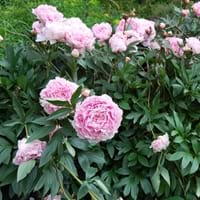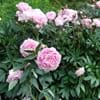Life Span
Perennial
Perennial
Type
Flowering Plants, Shrubs
Flowering Plants, Fruits, Trees
Origin
Asia, North America, Southern Europe
Anatolia, Asia, Europe, Iran, Maghreb, Morocco, Norway, The Hiamalayas
Types
Aristocrat, Buckeye Belle, Henry Bockstoce , Abalone Pearl, Coral Supreme, Cytherea, Charlie's White
Flowering Cherries, Sour Cherries, Sand Cherries, Sweet Cherries, Capulin Cherries
Habitat
Hillside, Woods
Forest edges, Wild, Woods
USDA Hardiness Zone
3-9
4-8
Sunset Zone
A3, 1a, 1b, 2a, 2b, 3a, 3b, 4, 5, 6, 7, 8, 9, 10, 11, 12, 13, 14, 15, 16, 17, 18, 19, 20, 22
4, 5, 6, 7, 15, 16, 17
Habit
Clump-Forming
Upright/Erect
Flower Color
Pink, Red, White
White
Flower Color Modifier
Not Available
Not Available
Fruit Color
Not Available
Red
Leaf Color in Spring
Dark Green
Dark Green
Leaf Color in Summer
Dark Green, Green
Orange
Leaf Color in Fall
Bronze, Dark Green, Green
Orange
Leaf Color in Winter
Not Available
Orange
Leaf Shape
Compound
Oblong
Plant Season
Spring
Spring, Summer
Sunlight
Full Sun, Part sun
Full Sun, Partial shade
Type of Soil
Loamy
Loamy, Well drained
The pH of Soil
Neutral
Slightly Acidic
Soil Drainage
Well drained
Average
Bloom Time
Spring, Summer
Early Spring, Spring
Tolerances
Not Available
Heat And Humidity, Not Available
Where to Plant?
Ground, Pot
Ground
How to Plant?
Grafting, Seedlings, Stem Planting, Transplanting
Grafting, Seedlings, Transplanting
Plant Maintenance
Medium
Medium
Watering Requirements
Does not require lot of watering, It cannot sustain wet-feet, Keep the ground moist but not water-logged, Needs watering once a week, Prefer drip-irrigation instead of Over-head watering, Water occasionally
Never Over-water, Over-watering can cause leaf problems or root diseases, Prefer drip-irrigation instead of Over-head watering, Water twice a day in the initial period
In Summer
Lots of watering
Lots of watering
In Spring
Moderate
Moderate
In Winter
Average Water
Average Water
Soil pH
Neutral
Slightly Acidic
Soil Type
Loamy
Loamy, Well drained
Soil Drainage Capacity
Well drained
Average
Sun Exposure
Full Sun, Part sun
Full Sun, Partial shade
Pruning
Do not prune during shooting season, Prune to control growth, Remove dead or diseased plant parts, Remove deadheads
Don't prune in the fall, Prune if you want to improve plant shape, Prune in late winter, Remove dead or diseased plant parts, Remove deadheads
Fertilizers
All-Purpose Liquid Fertilizer
All-Purpose Liquid Fertilizer
Pests and Diseases
Botrytis Blight, Leaf spot, Stem spot, Viruses
Aphids, Bacterial Canker, Black Knot, Brown Rot, Caterpillars
Plant Tolerance
Drought
Drought
Flower Petal Number
Semi-Double
Not Available
Foliage Texture
Coarse
Not Available
Foliage Sheen
Glossy
Not Available
Allergy
Not Available
Swelling in the face
Aesthetic Uses
Beautification, Bouquets, Showy Purposes, Used for decorating walls, fences, gates, hedges, etc.
Showy Purposes
Beauty Benefits
Not Available
Not Available
Environmental Uses
Air purification
Air purification
Medicinal Uses
Cough, Gout, Headache, Heartburn, Kidney problems, Upset stomach, Urinary tract problems
Arthritis, Gout, Kidney problems, Rheumatoid arthritis, Swelling
Part of Plant Used
Flowers, Root, Seeds
Flowers, Fruits
Other Uses
Showy Purposes, Used as Ornamental plant, Used for fragrance
Wood is used for making furniture
Used As Indoor Plant
No
No
Used As Outdoor Plant
Yes
Yes
Garden Design
Feature Plant, Foundation, Mixed Border
Not Available
Botanical Name
Paeonia lactiflora
Prunus avium
Common Name
Herbaceous Peony
Cherry Tree
In Hindi
Herbaceous peony
चेरी का पेड़
In German
Krautige Pfingstrose
Kirschbaum
In French
pivoines herbacées
Cerisier
In Spanish
peonía herbáceas
Cerezo
In Greek
ποώδη παιωνία
κερασιά
In Portuguese
peônia herbáceas
árvore de cereja
In Polish
piwonii zielnych
wiśniowe drzewo
In Latin
herbaceum AGLAOPHOTIS
Cherry
Phylum
Magnoliophyta
Magnoliophyta
Class
Magnoliopsida
Magnoliopsida
Order
Not Available
Rosales
Family
Paeoniaceae
Rosaceae
Clade
Angiosperms, Core eudicots, Eudicots
Angiosperms, Eudicots, Rosids
Tribe
Not Available
Not Available
Subfamily
Not Available
Not Available
Number of Species
Not Available
Importance of Chinese Peony and Cherry Tree
Want to have the most appropriate plant for your garden? You might want to know the importance of Chinese Peony and Cherry Tree. Basically, these two plants vary in many aspects. Compare Chinese Peony and Cherry Tree as they differ in many characteristics such as their life, care, benefits, facts, etc. Every gardener must at least have the slightest clue about the plants he wants to plant in his garden. Compare their benefits, which differ in many ways like facts and uses. The medicinal use of Chinese Peony is Cough, Gout, Headache, Heartburn, Kidney problems, Upset stomach and Urinary tract problems whereas of Cherry Tree is Arthritis, Gout, Kidney problems, Rheumatoid arthritis and Swelling. Chinese Peony has beauty benefits as follows: Not Available while Cherry Tree has beauty benefits as follows: Not Available.
Compare Facts of Chinese Peony vs Cherry Tree
How to choose the best garden plant for your garden depending upon its facts? Here garden plant comparison will help you to solve this query. Compare the facts of Chinese Peony vs Cherry Tree and know which one to choose. As garden plants have benefits and other uses, allergy is also a major drawback of plants for some people. Allergic reactions of Chinese Peony are Not Available whereas of Cherry Tree have Swelling in the face respectively. Having a fruit bearing plant in your garden can be a plus point of your garden. Chinese Peony has no showy fruits and Cherry Tree has showy fruits. Also Chinese Peony is flowering and Cherry Tree is flowering. You can compare Chinese Peony and Cherry Tree facts and facts of other plants too.





